Whispering Stones of Ostia Antica: Rome's Ancient Port Reimagined

Buongiorno and welcome to RomeCabs, Rome’s top-rated tour company for Private Day Tours from Rome, Italy Transfer Service, and Civitavecchia Shore Excursions since 2004. In Ostia Antica, Rome’s ancient port, you can truly say that you walk in the footsteps of the Ancient Romans!
Nestled along the scenic banks of the Tiber River, approximately 30 minutes from Rome, Ostia Antica stands as a silent witness to centuries of vibrant trade, religious ceremonies, and the rhythmic ebb and flow of daily life. Join me on this blog as we embark on a captivating journey through time, delving into the fascinating interplay of trade, religion, and the nuances of everyday existence in this extraordinary ancient port.
Ostia Antica: Rome's Ancient Port
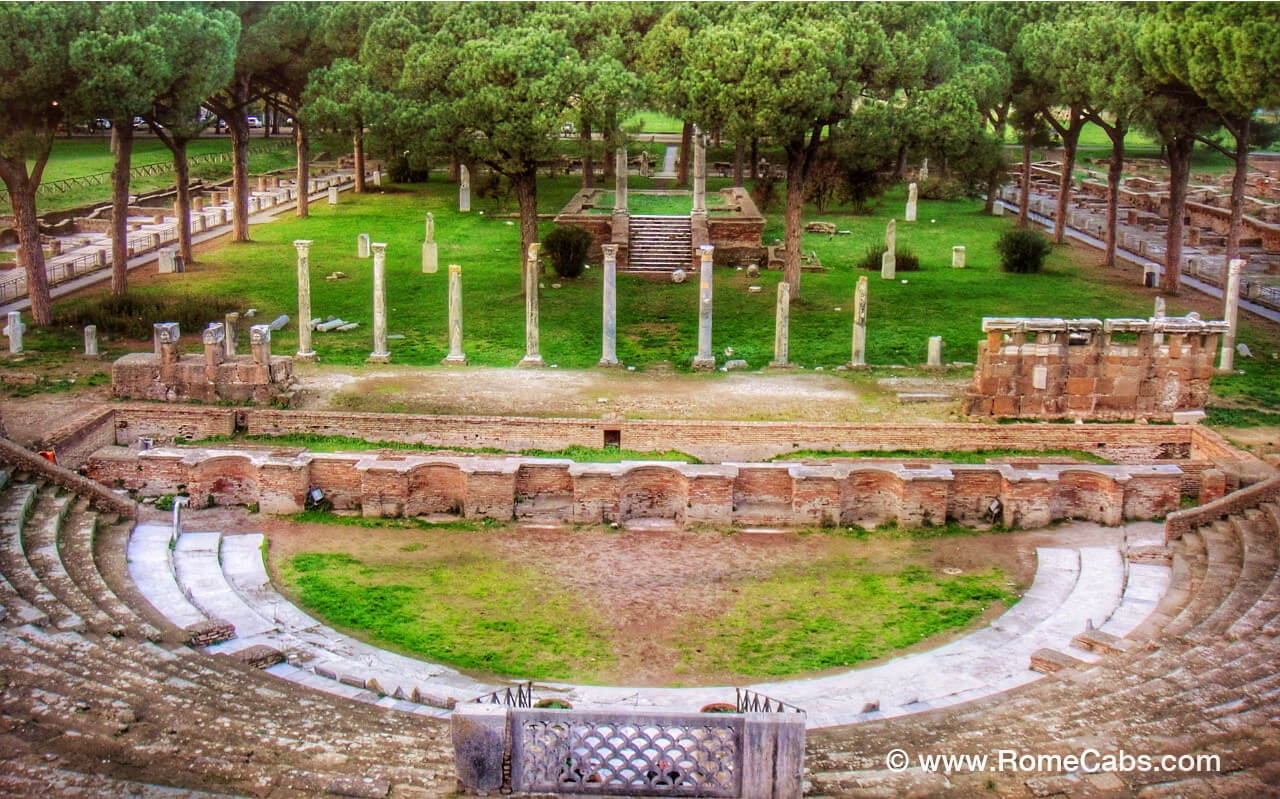
Ostia’s Trade Routes and Bustling Markets:
The strategic positioning of Ostia at the confluence of the Tiber River and the Tyrrhenian Sea was no accident. Established in the 4th century BC, Ostia evolved into a key maritime gateway that facilitated trade between Rome and the vast reaches of the Roman Empire. The city's location provided direct access to the Mediterranean Sea, making it an ideal port for importing and exporting goods.
The architectural layout of Ostia's harbor reflects the astute engineering of ancient Roman architects. The hexagonal-shaped basin, known as the Portus Ostiensis, allowed for efficient mooring of ships and streamlined the loading and unloading of cargo. Massive warehouses, strategically placed along the docks, stored a myriad of commodities awaiting distribution throughout the empire.
As visitors wander through the archaeological remnants, they can discern the intricate network of streets that once buzzed with merchants and traders. The Decumanus Maximus, the main east-west thoroughfare, and the Cardo, the primary north-south street, intersected at the Forum, creating a central hub where commercial, social, and religious activities converged.
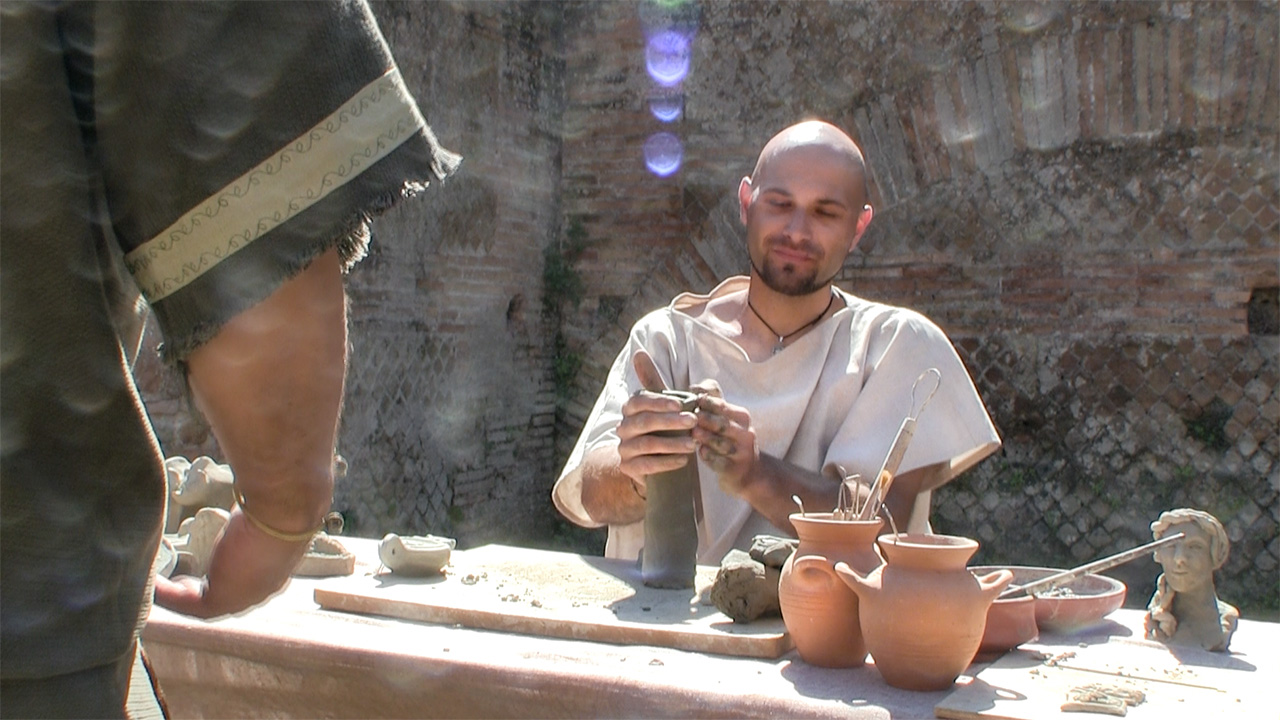
The Economic Pulse of Ostia
Ostia's economic prosperity was intricately tied to the ceaseless hum of its bustling markets. The Macellum, a market building adorned with Corinthian columns, was the epicenter of commercial transactions. Here, vendors peddled spices, textiles, and exotic goods from across the empire. The Terme del Foro, adjacent to the market, provided a space for merchants and buyers to negotiate deals and discuss business matters while enjoying the therapeutic benefits of the public baths.
The grand Horrea Epagathiana et Epaphroditiana, an imposing complex of warehouses, reveals the scale and sophistication of Ostia's storage facilities. These warehouses, several stories high, were equipped with ingenious systems such as elevators and pulleys to facilitate the movement of goods. The sheer volume of storage space highlights the city's role as a pivotal distribution center within the Roman Empire.
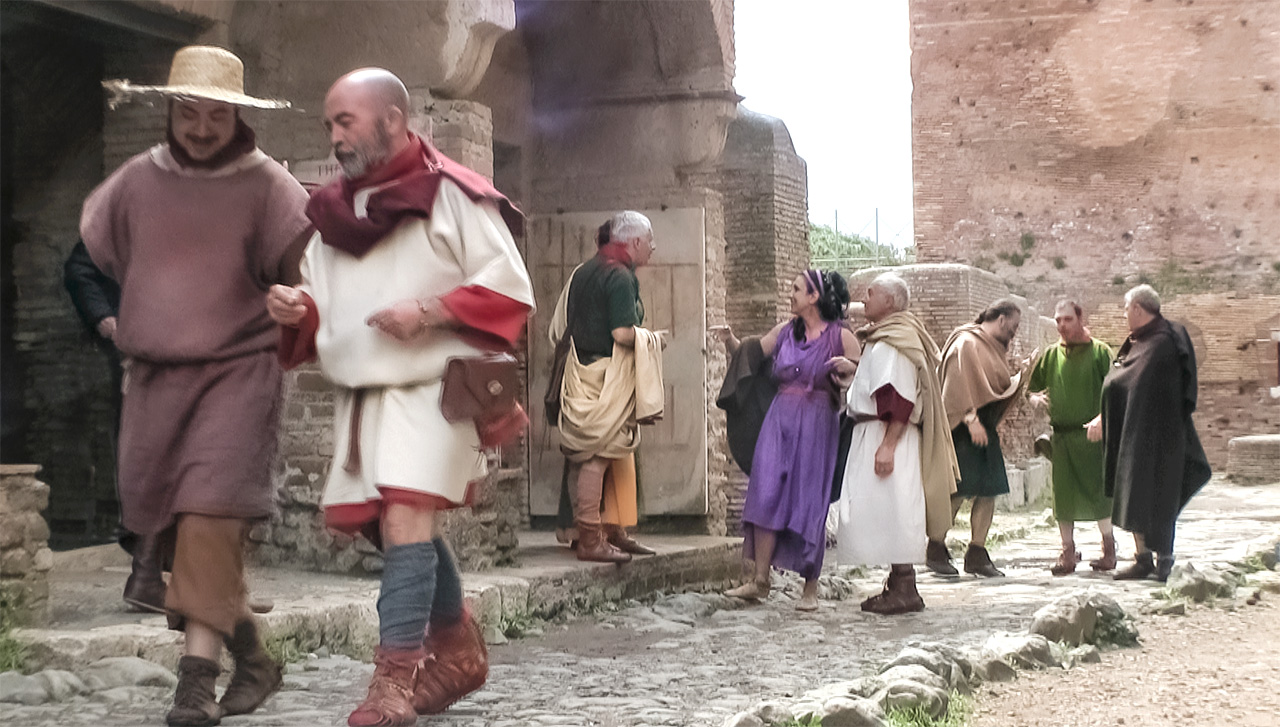
Piazza della Corporazioni: A Nexus of Trade Guilds
In the heart of Ostia, the Piazza della Corporazioni, or Square of the Guilds, stands as a testament to the city's vibrant economic tapestry. This expansive square housed the headquarters and meeting places for various trade guilds, underscoring the organized and regulated nature of commerce in Ostia.
The intricately carved marble facades of the guild buildings showcased the pride and identity of each trade group. From shipbuilders to grain merchants, the Piazza della Corporazioni was a melting pot of expertise, where professionals gathered to discuss business, set standards, and ensure the prosperity of their respective industries.
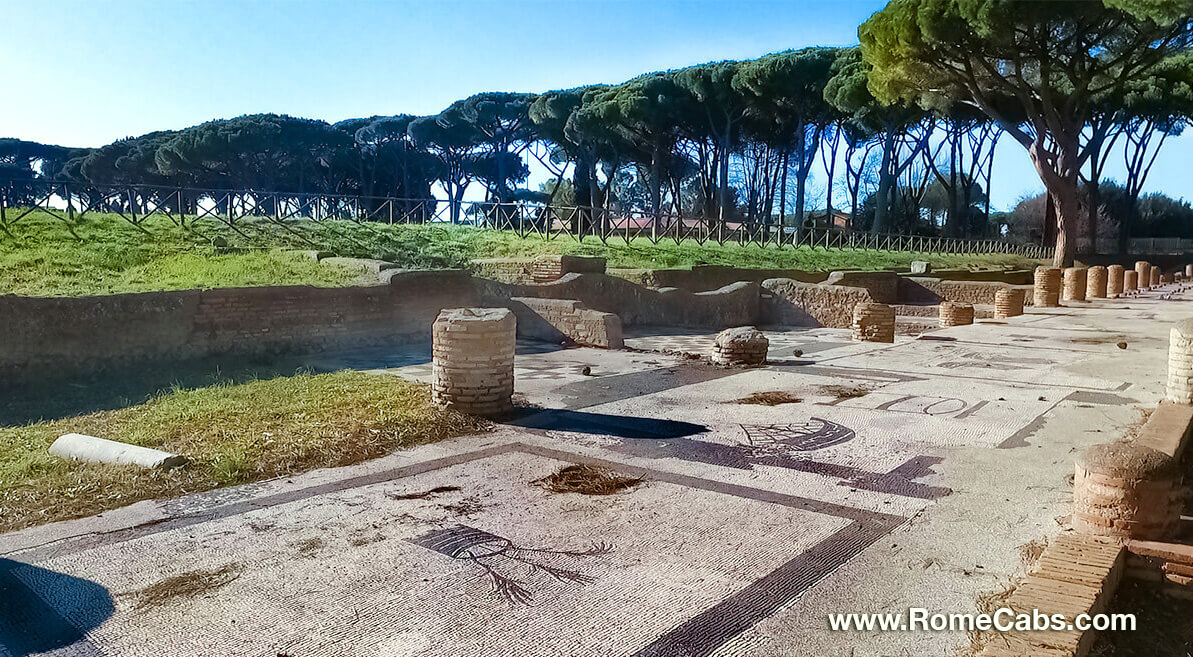
Religion in Ostia Antica
In the ancient Roman world, religion was a polytheistic and civic affair, intricately interwoven into the fabric of daily life. Every facet of existence, from politics and economy to health and agriculture, was believed to be under the care and influence of specific gods, giving the religious landscape a communal and public identity. The tolerance of foreign faiths in Ancient Rome was notable, as long as these beliefs did not oppose the Empire or its fiscal obligations.
Vulcan, the patron god of Ostia, was the Roman equivalent of the Greek Hephaestus and presided over metalwork and fire. Worship of Vulcan was particularly poignant, with the city seeking his protection against the ravages of fires that could decimate crucial grain stocks and other essential goods for Rome.
Alongside Vulcan, Ostia paid homage to Jupiter, Hercules, Ceres (the Roman goddess of agriculture), and an array of other deities. Shrines, sanctuaries, temples, and monuments dedicated to these gods were scattered across the city, seamlessly blending into both private and public spaces, making faith an integral part of everyday life.
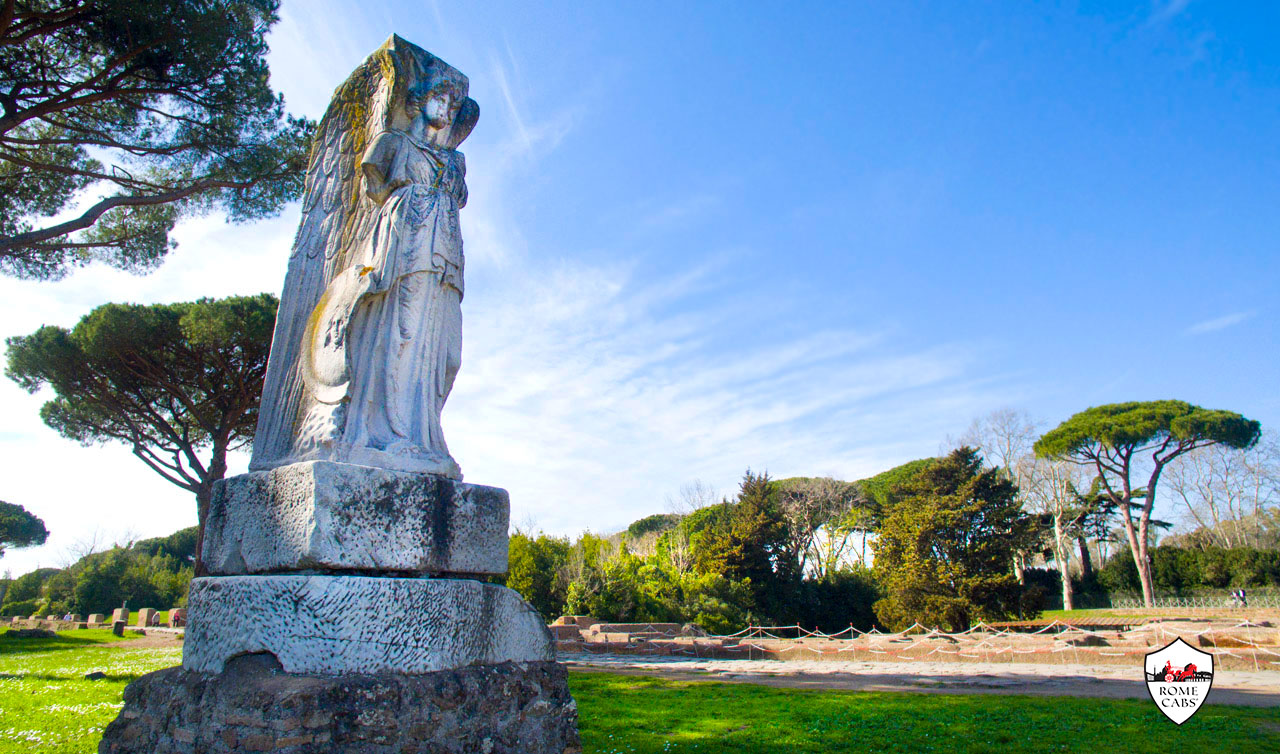
Diversity in Worship and Religious Structures
Ostia Antica embraced religious diversity with open arms. The city not only tolerated but celebrated a multitude of faiths, influenced by the myriad merchants arriving from different corners of the Roman Empire. The religious landscape featured shrines, sanctuaries, temples, and monuments dedicated to the Roman deities.
Ostia's religious landscape extended beyond the traditional Roman pantheon. The city boasted a temple, reminiscent of the Pantheon, dedicated to the cult of the deified Emperors, showcasing the intertwining of imperial authority and religious reverence. Additionally, Ostia housed a grand synagogue, dating back to the 2nd and 3rd centuries AD, attesting to the diversity of the population, including a Jewish community that had emigrated from Judaea.
Ostia's devotion extended beyond traditional Roman gods. A temple, reminiscent of the Pantheon, was dedicated to the cult of the deified Emperors, reflecting the city's allegiance to imperial authority. Moreover, the presence of a significant synagogue, dating back to the 2nd and 3rd century AD, attests to the Jewish population that had migrated from Judaea.

Rise of Christianity in Ostia
The transformative moment in Ostia's religious history came with the Edict of Milan in 313 AD, when Emperor Constantine legalized Christianity. Subsequently, Ostia transitioned into a Christian city. The once-thriving commercial activity had shifted to the Harbor of Trajan, leading to a decline in population.
Pagan temples, no longer central to daily life, were dismantled or repurposed into basilicas, reflecting the rise of Christianity. Ostia became a Christian city, absorbing and integrating pagan traditions, customs, and spiritual iconographies into the evolving Christian faith.
The stones of Ostia, now weathered and fragmented, whisper tales of a city that evolved with the ebb and flow of faiths, from the vibrant polytheism of its heyday to the transformative embrace of Christianity. In tracing the archaeological remnants, we witness not only the physical structures but also the spiritual journey of a city that once stood at the crossroads of diverse beliefs, mirroring the vast tapestry of the Roman Empire itself.
Daily Life in Ostia
Daily life in Ostia unfolded as a dynamic and multifaceted experience, shaped by the city's role as a bustling port and commercial hub. The routine for the city's population mirrored that of a metropolis, with a myriad of activities that defined their existence.
One of the defining aspects of daily life in Ostia revolved around the in-and-out flux of products from all corners of the Roman Empire. As an essential port city supplying Rome, the ebb and flow of goods, especially grain, played a pivotal role. The laborious tasks of cataloging, storing, and protecting this vital commodity were woven into the fabric of everyday activities, underscoring the city's critical economic function.
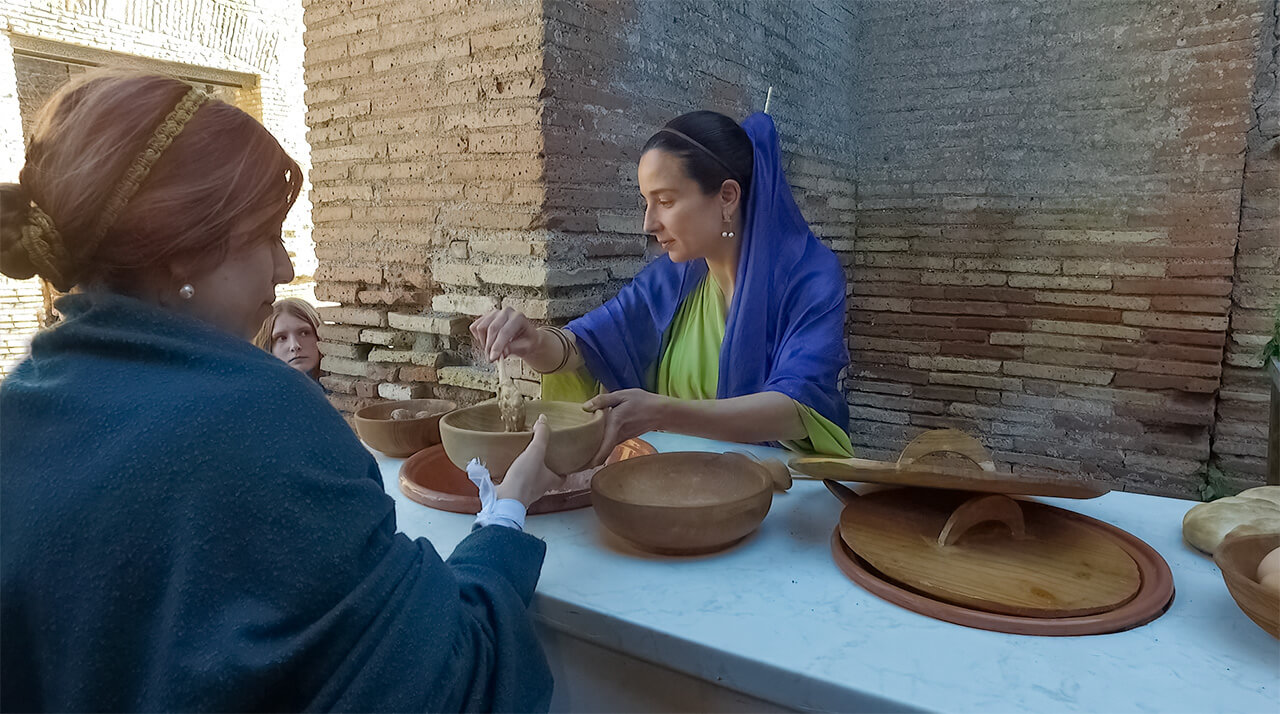
The social fabric of Ostia was as diverse as its commercial activities. The population's economic status was reflected in their living quarters. The affluent inhabitants resided in spacious houses adorned with mosaics and frescoes depicting mythological motifs, showcasing their education and sophistication.
On the other hand, those with more modest means lived in multi-story apartment buildings (insulae), with social hierarchy mirrored in the vertical arrangement – the wealthier individuals occupying lower floors.
The city's cosmopolitan nature was evident in its diverse population, influenced by the constant influx of foreign representatives due to its significance in trade and commercialization. Temples and shrines dedicated to various deities dotted the city, illustrating the importance of religion in Ostia's social fabric.

Commerce was not only a part of daily life but also shaped the city's layout. The commercial district, especially around the docks, was organized according to the products sold, creating designated areas for meat, vegetables, furniture, and more. The forum served as the administrative and governmental center, strategically placed near the curia and senate buildings.
The architectural orientation of Ostia Antica toward the Tiber River, the primary mode of arrival, created a welcoming atmosphere. A monumental portico structure faced the river, housing shops, while behind it, the public theater stood as a testament to the city's commitment to entertainment and social gatherings.
Water, easily accessible due to its seaside location, played a crucial role in the city's architecture, with public baths, saunas, and spas serving as places for both relaxation and socializing.
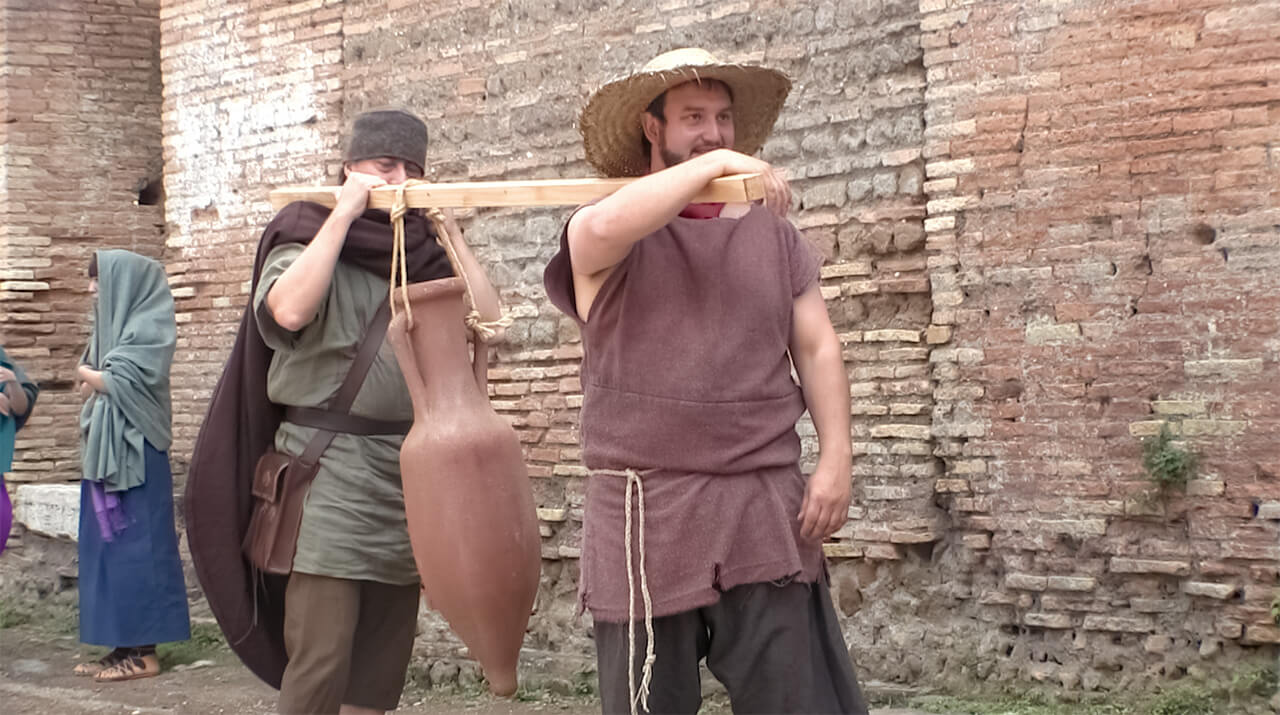
In essence, Ostia was more than a mere port city; it was an industrial center vital for Rome's well-being. The daily lives of its inhabitants were intricately woven into the commercial activities that defined the city. Even in ancient times, Ostia stood as a testament to a successful and modern society, where daily life harmonized with the rhythm of trade, diverse cultures, and the ever-present echoes of the Tiber River.
In the lingering echoes of Ostia's ancient stones and the remnants of its once-thriving civilization after the fall of the Roman Empire, we are transported to an era when the symphony of trade, religion, and daily existence harmoniously echoed through its cobblestone streets. As we navigate the remnants of temples and markets, a vivid portrait emerges of a city that proudly stood as a crossroads in the ancient world.
You too can explore Ostia Antica from Rome either utilizing public transportation on your own or booking a day tour from Rome to Ostia.
On these popular Day Tours from Rome and Shore Excursions from Civitavecchia, you can enjoy a visit to Ostia Antica:
- Along Rome’s Empire Road Tour - On this exciting Rome tour and Shore Excursion from Civitavecchia, you have the opportunity to venture along some of Rome’s famous ancient Roads to the Basilica of Saint Paul Outside the Walls, Ancient Appian Way, the Christian Catacombs, and Ostia Antica.
- Ancient World Tour to Ostia Antica and Cerveteri - Travel back in time to two of Italy’s most profound ancient civilizations: the Etruscans with an adventurous exploration of the ancient tombs of Banditaccia Necropolis in Cerveteri, and walk in the footsteps of Ancient Romans in Ostia Antica. This tour is available from Rome and from Civitavecchia.
- Ostia Antica Pre-Cruise Tour - Cruisers staying in Rome pre-cruise can spend a morning exploring Ostia Antica followed by a transfer to Civitavecchia.
Thank you for reading our travel blog and for choosing RomeCabs for your private tours in Italy and Shore Excursions from Civitavecchia. We look forward to showing you beautiful places in Italy!
* Find RomeCabs online also on:
- RomeCabs FACEBOOK
- RomeCabs PINTEREST
- RomeCabs TWITTER
- RomeCabs INSTAGRAM
- Rome Cabs FLICKR Photo Gallery
